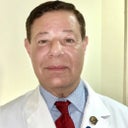Photos would have been extremely helpful. Not uncommonly new patients come to me asking me to treat this or that particular line or fold, such as smile lines or marionette lines, mistakenly thinking that doing so would solve their problems and rejuvenate their faces. Over three decades ago, when we knew much less about what actually goes on within the aging face, we did just that, i.e. simply chased after the individual lines. But, more often than not, after doing so, we ended up with patients who were unhappy with their results; they didn't have the lines or folds, but they really didn't look younger. And sometimes, pushing in more filler to further flatten, say the smile lines, created what has become known as the "simian facies," i.e. the smile-line-less look of a chimpanzee. Facial sagging, with the appearance of smile lines, marionette lines, jowls along the jawline and even sacs under the eyes, actually stems from significant loss of volume within the fat pads of the upper and to some extent the mid cheeks (not from weight loss, but often unmasked by significant weight loss, as likely is the case here). Restoring the volume in the cheeks with a volumizing filler is therefore the more appropriate measure for rejuvenating the face. One wouldn't consider painting the rooms of a house first before putting in its foundation. Yet, that is what most patients mistakenly request and most inexperienced, novice injectors and medspas do in cases such as yours. Today, experienced aesthetic physicians perform facial sculpting and contouring with fillers, rather than simply filling lines. To illustrate this very important point, just pull upwards and backward in the cheekbone region and you will likely note a tremendous, secondary diminution in your smile lines. This is so, as was already pointed out, since cheek volume loss is largely responsible for the development of these folds. In my Upper East Side Manhattan practice, I would choose Voluma XC for the cheeks and in my Israel satellite facility, where a far greater number of agency approved volumiziing fillers are available, I would opt for Stylage XXL for this purpose. Additionally, were one to treat the smile lines directly, owing to the fact that this area is subject to so much movement, the results typically would be expectd to last only about a year. By contrast, when treating the cheeks, an area not subject to as much mechanical stress, results may last up to two years particularly with the more robust fillers mentioned above. For more information on the above, you may wish to perform a search under The Nonsurgical 3D Vectoring Facelift in the archives of RealSelf.com. You would do well to consult with a board certified aesthetic physician to discuss these issues, and be certain to ask to see his/her before and after photos before agreeing to proceed. Best of luck.







